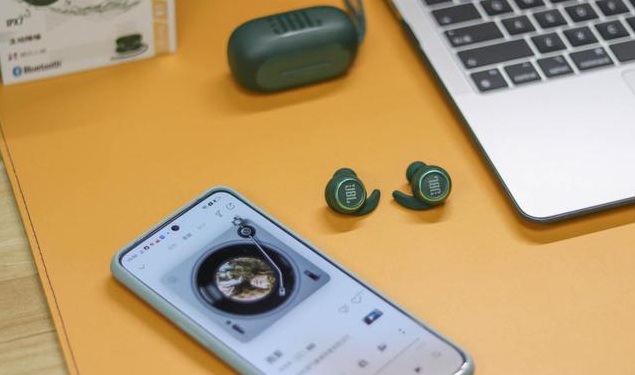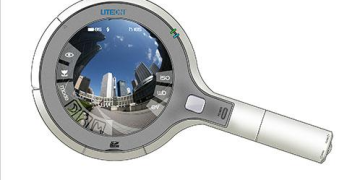Introduction
In today’s digital landscape, immersive experiences are reshaping the way we interact with technology, offering unprecedented levels of engagement and interactivity. At the forefront of this revolution are augmented reality (AR) and virtual reality (VR) technologies, which immerse users in virtual environments and augment their perception of reality. In this article, we will delve into the world of AR and VR design, exploring the principles, challenges, and opportunities of designing for immersive experiences.
Understanding Augmented Reality (AR)
Augmented reality (AR) is a technology that overlays digital content onto the real world, enhancing our perception of reality. By superimposing virtual objects and information onto our physical surroundings, AR blurs the line between the digital and physical realms, creating immersive experiences with real-world context. From interactive museum exhibits to location-based gaming, AR applications span a wide range of industries and use cases, offering new avenues for exploration and engagement.
Exploring Virtual Reality (VR)
Virtual reality (VR) takes immersion to the next level by transporting users to entirely virtual environments, detached from the physical world. Through specialized headsets and controllers, VR users can interact with and navigate through virtual spaces, experiencing everything from immersive storytelling to virtual training simulations. From gaming and entertainment to education and healthcare, VR has the potential to revolutionize how we experience and interact with digital content.
The Role of Design in Immersive Experiences
Design plays a crucial role in shaping immersive experiences in AR and VR. User-centered design principles are paramount, as designers must prioritize usability and user engagement to create compelling experiences. However, designing for AR and VR presents unique challenges, including spatial constraints, motion sickness, and interaction paradigms. By embracing iterative design processes and user testing, designers can address these challenges and create experiences that resonate with users.
Enhancing User Experience in AR and VR
In AR and VR design, enhancing user experience is paramount. Intuitive interfaces and navigation are essential for guiding users through immersive environments, ensuring seamless interaction and exploration. Interactive elements such as gestures, voice commands, and haptic feedback can further engage users and deepen their immersion. By prioritizing user experience, designers can create AR and VR experiences that captivate and delight users.
Technical Considerations in AR and VR Design
Technical considerations play a significant role in AR and VR design, as designers must account for hardware and software limitations. From device compatibility to performance optimization, designers must ensure that AR and VR experiences are accessible and scalable across different platforms. Additionally, optimizing for performance is crucial to prevent motion sickness and ensure a smooth user experience.
Designing for Accessibility
Accessibility is an essential aspect of AR and VR design, as designers must ensure inclusivity for users with disabilities. Providing alternative modes of interaction, such as voice commands or controller customization, can accommodate users with mobility impairments. Similarly, designing for visual and auditory accessibility ensures that users with sensory impairments can fully engage with immersive experiences.
Best Practices for AR and VR Design
In AR and VR design, several best practices can guide designers in creating compelling experiences. Emphasizing storytelling and narrative can immerse users in the virtual world and evoke emotional responses. Additionally, an iterative design process, coupled with user testing and feedback, allows designers to refine their designs and address usability issues effectively.
Case Studies and Examples
Examining case studies and examples provides valuable insights into successful AR and VR projects. From immersive art installations to educational simulations, case studies showcase the potential of AR and VR to revolutionize various industries. By analyzing design decisions and user feedback, designers can learn from past successes and apply best practices to their own projects.
Ethical Considerations in Immersive Design
As with any emerging technology, AR and VR design raise ethical considerations that must be addressed. Privacy concerns, such as data collection and tracking, require careful attention to ensure user trust and transparency. Additionally, the impact of immersive experiences on social interactions and real-world experiences should be considered to mitigate potential negative effects on users.
Future Trends in Immersive Experiences
Looking ahead, the future of AR and VR is brimming with possibilities. Advances in technology, such as augmented reality glasses and haptic feedback systems, promise to enhance immersion and realism. Furthermore, the integration of AR and VR with other emerging technologies, such as artificial intelligence and the Internet of Things, opens new avenues for innovation and exploration.
Business Opportunities in AR and VR
The proliferation of AR and VR technologies presents significant business opportunities across various industries. From retail and marketing to healthcare and training, AR and VR have the potential to revolutionize how businesses engage with customers and employees. Monetization strategies, such as subscription models and in-app purchases, can unlock new revenue streams for AR and VR experiences.
Educational Resources and Communities
For designers looking to delve into AR and VR design, a wealth of educational resources and communities are available. Online courses, workshops, and tutorials provide hands-on training in AR and VR design principles and tools. Additionally, networking opportunities and professional organizations offer support and mentorship for aspiring designers entering the field of immersive experiences.
Conclusion
In conclusion, designing for immersive experiences in augmented reality (AR) and virtual reality (VR) represents a transformative frontier in digital design. By embracing user-centered design principles, addressing technical considerations, and prioritizing accessibility and usability, designers can create compelling AR and VR experiences that captivate and delight users. As technology continues to evolve, the potential for AR and VR to revolutionize how we interact with digital content is boundless, offering endless opportunities for innovation and exploration.

FAQs After The Conclusion
- What is augmented reality (AR)?Augmented reality (AR) is a technology that overlays digital content onto the real world, enhancing our perception of reality by superimposing virtual objects and information onto physical surroundings.
- What is virtual reality (VR)?Virtual reality (VR) is a technology that transports users to entirely virtual environments, detached from the physical world, through specialized headsets and controllers.
- What role does design play in immersive experiences?Design plays a crucial role in shaping immersive experiences in AR and VR, prioritizing usability, engagement, and accessibility to create compelling user experiences.
- What are some technical considerations in AR and VR design?Technical considerations in AR and VR design include hardware and software requirements, optimization for performance, and compatibility across different platforms and devices.
- How can designers ensure accessibility in AR and VR experiences?Designers can ensure accessibility in AR and VR experiences by providing alternative modes of interaction, designing for visual and auditory accessibility, and addressing the needs of users with disabilities.
- What are some best practices for AR and VR design?Best practices for AR and VR design include emphasizing storytelling and narrative, adopting an iterative design process with user testing, and prioritizing user experience and engagement.
- What ethical considerations are associated with immersive design?Ethical considerations in immersive design include privacy concerns related to data collection and tracking, as well as the impact of immersive experiences on social interactions and real-world experiences.
- What are some future trends in AR and VR?Future trends in AR and VR include advances in technology such as augmented reality glasses and haptic feedback systems, as well as integration with other emerging technologies like artificial intelligence and the Internet of Things.
















